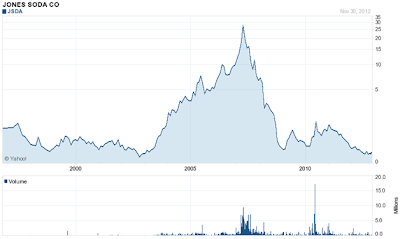Fiscal Cliff Fools Should Mind the Q3 GDP Report & Q4 Forecast
The market, as measured by relative indexes, has seen a muted reaction to the positive news because of concerns about the future. We can see through the table below that stocks of all sorts reflect contained enthusiasm today on what would have otherwise driven shares much higher. Furthermore, our esteemed representatives in Washington D.C. should be interested in seeing investment capital flows that favor economic growth and so fuel it. Thus, the non-reaction of stocks to this news today is quite concerning to me, as it should be to you.
|
Index Tracking Security
|
Thursday Change Through 11:30
AM ET
|
|
SPDR S&P 500 (NYSE: SPY)
|
-0.05%
|
|
SPDR Dow Jones Industrials (NYSE: DIA)
|
-0.14%
|
|
PowerShares QQQ (Nasdaq: QQQ)
|
-0.42%
|
|
iShares Russell 2000 (NYSE: IWM)
|
+0.12%
|
|
Wilshire 5000 ETF (NYSE: WFVK)
|
Price Not Updated
|
The final reporting of Q3 GDP is based on more complete data, and so is more reliable than earlier versions of the estimate. The Bureau of Economic Analysis (BEA), which is responsible for reporting GDP, indicated that the general picture of the economy had not changed much since the prior reporting of Q3. However, two important aspects had been altered some.
The Real Personal Consumption Expenditures (PCE) data-point was hiked to show an improved growth rate of 1.6% in Q3, versus 1.5% in Q2. Considering the “real” aspect of this data, and that the price index was unchanged, we can enjoy the gain without concern about noise. American demand for goods drove the increase, though those were continued at discounters like Wal-Mart (NYSE: WMT) and Amazon.com (Nasdaq: AMZN). At the same time, real imports of goods and services declined 0.6% in Q3, contrasting with the 2.8% increase in Q2.
If U.S. legislators want to best support the economic expansion seen in the Q3 data, it would be wise to keep in place supports to consumer and business spending. That means income tax rates are best left as is, in my view, with perhaps some flexibility at the very top of the earner ladder. Still, with increased healthcare costs for many who fall in between the various measures of “the rich”, those at the lower end of the wealth perspective ($250K earners) are facing the prospect of a burdensome tax hike. We need to keep the load off them, and raise that tax increase threshold significantly higher. We can support revenue enhancement in a less than smothering manner.
The latest housing data, including today’s reported Existing Home Sales annual pace increase to 5.04 million, a 5.9% improvement over October’s pace, argues for continued support of real estate market incentives. So, taking those off the negotiating table completely would be wise in my view, since housing activity is still at relatively low levels. Homebuilder sentiment, just reported this week, is finally climbing to less than pathetic levels, but can be undermined easily because it is mostly built on hope and less on real buyer traffic. We need to keep incentives in place for the historically critical real estate market.
This article is not intended to discuss the entire fiscal cliff or budgetary issues, or to find places to cut costs or to raise revenues, but to reinforce the still relative need for fiscal policy programs geared to provide incentive and fuel for economic growth. Economists see fourth quarter GDP growth slipping to 1.4%, according to a Bloomberg survey conducted in December. As we know, several economists’ groups have warned that a complete failure to at least control the rate of descent from the fiscal cliff could drive the U.S. economy into recession. Further, I’ve warned that the delay in addressing the cliff has effectively stymied business investment and hampered the economy in Q4, and that is reflected in the consensus view for economic growth in Q4.
Legislators would do well to compare today’s reported GDP data with economists’ expectations in order to preserve this still vulnerable economy and to fuel capital investment in it. Congressmen should be noting today’s non-move in stocks, and gaining some understanding of what that says about business and investor confidence in their ability to correctly steer fiscal policy. Action is in order and overdue.
Please see our disclosures at the Wall Street Greek website and author bio pages found there. This article and website in no way offers or represents financial or investment advice. Information is provided for entertainment purposes only.
Labels: Economy, Economy-2012-Q4, Editors_Picks, Editors-Picks-2012-12, Featured, Featured-2012-Q4, Syndicate






























